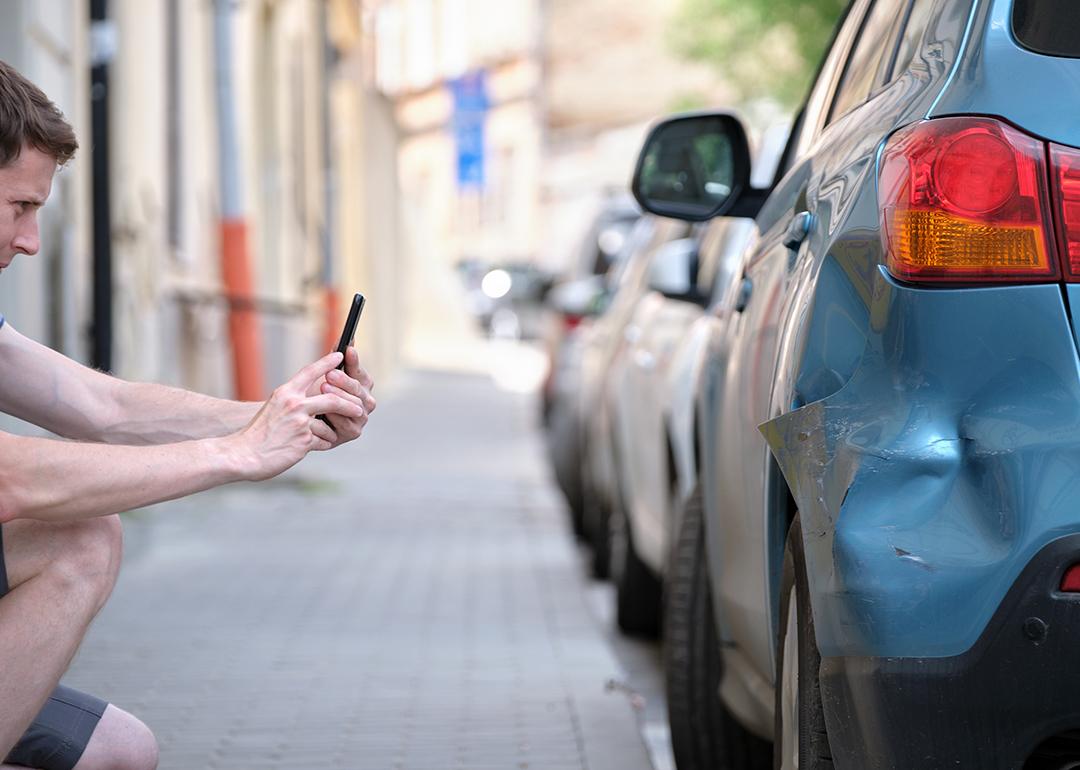
Hit-and-run car insurance claim: What happens to your insurance rate?
This story was produced by CheapInsurance.com and reviewed and distributed by Stacker Media.
Hit-and-run car insurance claim: What happens to your insurance rate?
Being the victim of a hit-and-run accident is a stressful and frustrating experience. Not only do you have to deal with the damage to your vehicle, but you're also left without the necessary information to pursue a claim against the at-fault driver. This can leave you wondering how to proceed with insurance and what impact it will have on your rates.
In this article, CheapInsurance.com breaks down everything you need to know about hit-and-run car insurance claims, including the types of coverage that may apply, the claims process, and how this incident could affect your insurance premium.
Key Takeaways
- Hit-and-run accidents are stressful, but insurance can help.
- Collision, UM/UIM, and Med Pay coverage may apply.
- Hit-and-run claims involve more investigation.
- Not-at-fault claims typically don't raise rates.
- Consult your insurer and consider legal advice.
Understanding Hit-and-Run Accidents
A hit-and-run accident occurs when a driver collides with another vehicle, pedestrian, or object and then flees the scene without providing necessary information or rendering aid. These incidents can cause significant damage to property, injuries, and emotional distress for those involved.
Hit-and-run accidents are illegal and often involve drivers who are intoxicated, uninsured, or have a suspended license. This makes pursuing compensation particularly challenging for victims.
Which Auto Insurance Covers Hit-and-Run Damages?
Unfortunately, there's no specific insurance policy designed solely for hit-and-run accidents. However, certain types of coverage can help you recover damages after such an incident.
Collision Coverage: This covers damage to your vehicle resulting from a collision, including hit-and-run accidents. However, you'll typically be responsible for paying your deductible.
Uninsured/Underinsured Motorist (UM/UIM) Coverage: While primarily for accidents involving drivers without insurance, UM/UIM coverage can sometimes apply to hit-and-run cases. However, the availability and specifics of this coverage vary by state.
Medical Payments Coverage (Med Pay): This optional coverage helps pay for medical expenses for you and your passengers, regardless of who caused the accident.
It's important to review your insurance policy carefully to understand your specific coverage and limits.
Hit-and-Run vs. Regular Automobile Insurance Claims: Key Differences
Filing a hit-and-run car insurance claim differs significantly from a standard claim. Here are the primary differences:
Lack of At-Fault Driver Information: In a regular claim, you typically have details about the other driver, their insurance company, and the circumstances of the accident. With a hit-and-run, this information is absent, complicating the claims process.
Increased Investigation: Insurance companies often conduct more thorough investigations into hit-and-run claims to gather evidence and verify the incident.
Potential for Higher Deductibles: Depending on the type of coverage used, you may face higher deductibles compared to a standard claim.
Uninsured/Underinsured Motorist Coverage: This coverage often becomes crucial in hit-and-run cases, as it's designed to protect you when the at-fault driver is uninsured or underinsured.
Understanding these differences can help you navigate the claims process more effectively.
The Impact of a Hit-and-Run Claim on Your Car Insurance Premium
A common concern after a hit-and-run accident is how it will affect car insurance quotes. The good news is that in many cases, a hit-and-run claim won't necessarily lead to an increase in insurance costs.
Here's a breakdown:
No Fault Accidents: If you can prove you were not at fault (e.g., parked car hit by a hit-and-run driver), your insurance rates typically won't increase.
Collision Coverage: If you use collision coverage to file the claim, it's generally considered a standard claim, and your rates may or may not increase depending on your insurer's policies and your overall claims history.
Uninsured/Underinsured Motorist Coverage: Using this coverage usually won't affect your rates since you're not considered at fault.
However, it's essential to check with your specific insurance provider to understand their policies regarding hit-and-run claims.
While your rates might not increase due to the hit-and-run itself, factors like increased repair costs or the need for rental car coverage could indirectly impact your premium.
Protecting Yourself After a Hit-and-Run Accident
Being involved in a hit-and-run accident can be a daunting experience. Understanding your insurance options and the potential impact on your premium is crucial.
- Document everything: Take photos of the accident scene, your vehicle damage, and any injuries.
- Report the incident to the police promptly.
- Contact your insurance company as soon as possible.
- Review your insurance policy to understand your coverage options.
By taking proactive steps and working closely with your insurance provider, you can increase your chances of recovering damages and minimizing the financial impact of the accident.
If you've been involved in a hit-and-run accident, consulting with an experienced attorney may also be beneficial.



